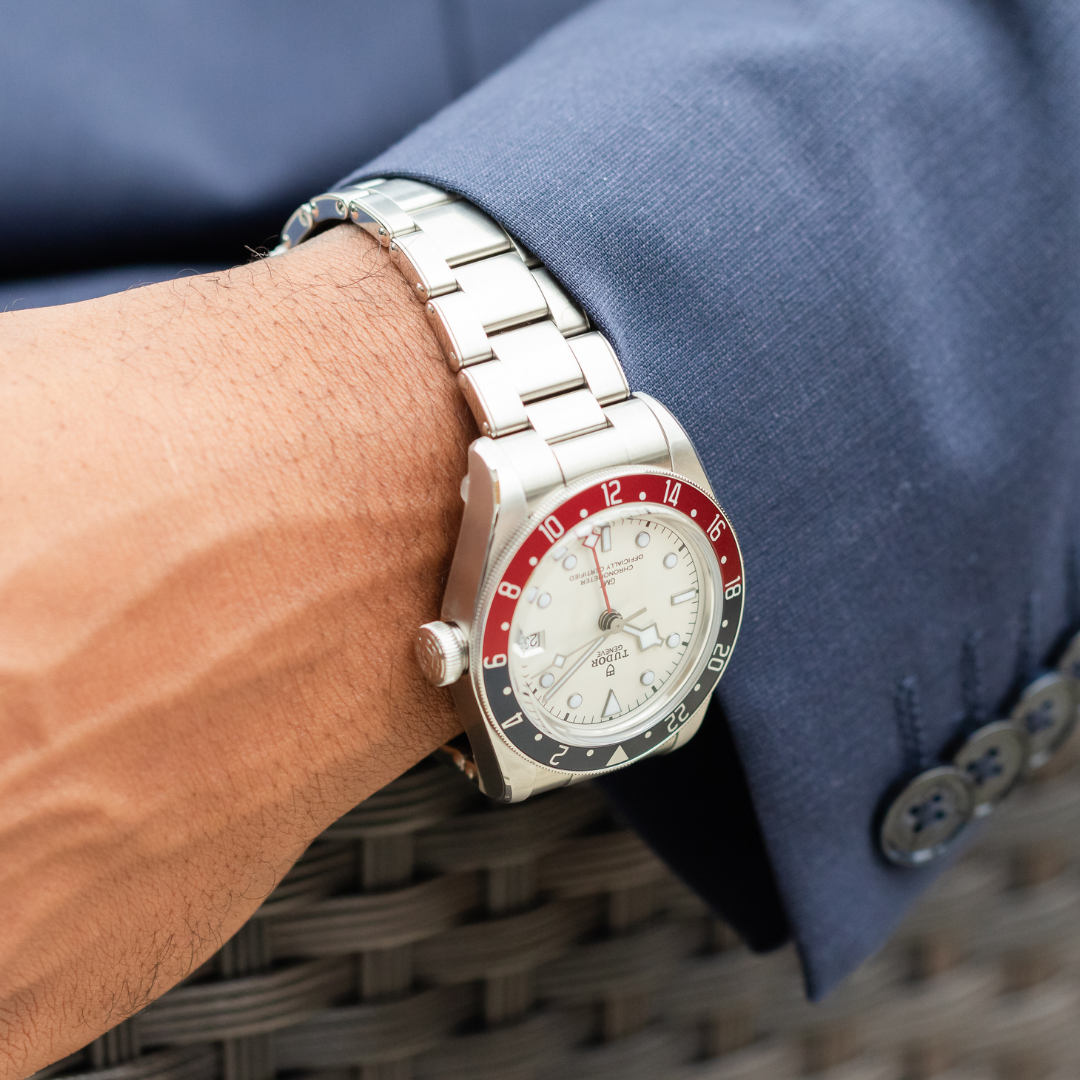
Having a conversation with a watch enthusiast can feel like speaking a different language. You know you’re hearing something important. But, if you’re not sure what it all means, this handy guide will help you.

Let’s start with a few you’ll encounter most often when watch shopping.
Case size
Watches are measured in millimeters and the case size refers to the overall size of the watch, not including the crown or other protrusions.
Crown
This is the knob on the case used for winding the watch or adjusting the time. Dive watches will have something called a Screw Down Crown that is designed to keep water out of the watch.
Thickness
Thickness, like case size, is also measured in millimeters and lets you know the thickness of the watch, or how high it sits.
Lug to Lug
This measurement gives you the distance between the watch’s lugs or the protruding extensions on the case. It’s a measurement that will give you a clear understanding of how the watch will sit on your wrist.
Bracelet and/or Strap
The part that keeps the watch on your wrist comes with its own terms. The bracelet/strap Material will tell you if it’s made of gold, platinum, titanium, leather, rubber/silicone, or stainless steel. The Clasp type tells you how the bracelet connects. It might be a tang buckle, which works like your belt, or it could be a type of folding clasp like you’d find on a bracelet.
Here are some other important watch terms:
Finish
The texture or surface treatments you’ll find on your watch. This will be accompanied by styles like brushed, polished, or matte.
Materials
You’ll see this referring to the different types of things used to make the watch. It can include the case, strap, dial, and hands. Many watches today are made of several materials, so it’s not unusual to see materials like leather and titanium together.
Indices
These are the markings that indicate the time. They can be basic lines, Roman numerals, or traditional Arabic numbers.
Color
Typically references the dial color and finishes.
As you dig deeper into watch knowledge, you’ll want to know some of these important terms, too:
Bezel
The ring that surrounds the watch crystal. Some bezels are stationary, while others rotate and adds functionality to your watch (such as additional time zones).
Movement
When you hear watch enthusiasts ask about the “movement” of a watch they are referring to the internal power of the watch. Automatic movements are mechanical and wind themselves as your wrist moves during the day. Manual movement watches are the ones you wind manually. And quartz movements operate on a battery.
Calibre
A calibre gets into the specific movement of the watch that would distinguish it from others. For example, a newer watch in a line of watches would have a different calibre number, because the manufacturer has made improvements to the internal movement.
Accuracy
Even the finest watches will “lose” time and may not be as accurate from day-to-day. While the amount lost is often tiny, it can add up over days or weeks. COSC Certification (Contrôle Officiel Suisse des Chronomètres) is the standard used by most watch manufacturers and gives you a way to fairly compare watches, no matter the brand.
Water Resistance
If you’re buying a watch for diving, this number is particularly important. It will be shown in meters or ATM (atmospheres). A dive watch would have a much higher water resistance, while a dress watch has almost none. Over the years, the watch industry has preferred the phrase “water resistant” over “waterproof,” since sealing devices can breakdown over the years.
Power Reserve
This is a measurement of how long the watch can run without being wound or installing a new battery.
Complications
Each additional function added to a watch, beyond basic time keeping, is called a “complication.” Watch complications can include things like sub dials that act as a stopwatch, displays showing today’s date, moon phases, or alarms.
Sub Dials
Smaller dials on a watch that keep track of seconds, act as a stopwatch, a different time zone, or indicate the date. Sub dials come in many forms and add functionality to your watch.
Jewels
The number of jewels used in a movement was once used to signify the quality of the watch. They were used to help reduce friction. While it’s not as common today, you may encounter a spec sheet on a vintage watch referring to the jewels in the movement.
Frequency
This is the rate at which your watch ticks. The number is has to do with the internal oscillations happening in the in. Sometimes you’ll see the number represented as 28,800 vph/bph (vibrations or beats per hour), or it will show up as a measurement in Hertz. For example, 4Hz is equal to 28,800 vph.
Watch aficionados, collectors, and lovers of the fine craft have a language all their own. Knowing these terms will get you started on appreciating watches and watchmaking in a whole new way.
As always, if you ever have any questions about watches, just stop by one of our Shreve & Co. locations in Palo Alto or San Francisco.


